With the demand for hydrogen fuel cell-powered vehicles and equipment increasing, so does the need for hydrogen-compatible equipment and components. Core Sensors, a leading manufacturer of pressure and temperature transducers, produce a range of specialist pressure sensors capable of monitoring the dispensing and storage of hydrogen.
There are some known difficulties when working with hydrogen in its gas form, so selecting the correct sensor configuration is a key factor in the planning process. Two of the biggest concerns are hydrogen embrittlement and hydrogen permeation.
Hydrogen embrittlement is the degradation of a sensor diaphragm’s metal properties caused by hydrogen. To avoid this, choose the optimum sensor materials. Materials to avoid are 17-4 stainless steel and nickel-based alloys like Inconel 718.
Hydrogen permeation happens when hydrogen atoms (H2) separate into hydrogen ions (H+) under specific conditions like high pressure and temperature. These hydrogen ions can pass through the sensor diaphragm’s molecular structure.
To overcome these complications, Core Sensors have designed a range of pressure sensors, transducers and transmitters, providing a high-quality and long-life solution for your hydrogen application.
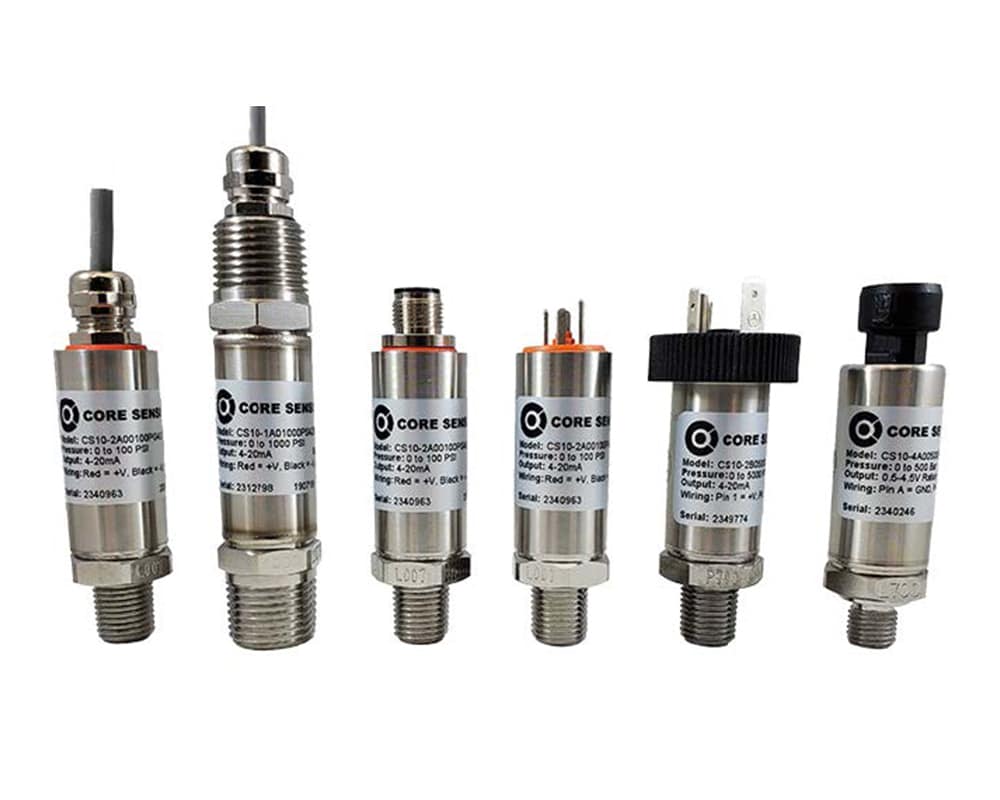
Design & Materials selection
Fluid filled sensor diaphragms are highly susceptible to hydrogen permeation and should be avoided. Hydrogen ions that pass through the thin diaphragm will form hydrogen bubbles in the fill fluid causing zero and span shifts. Over time these bubbles can expand and cause the diaphragm to bulge and eventually fail, resulting in the fill fluid leaking and contaminating the process.
To avoid having fluid filled cavities, sealing materials such as O-rings or welded joints, Core Sensors can manufacture their sensors using a single piece of 316L stainless steel. This solid piece of stainless steel then contains the hydrogen within the pressure port, reducing the possibility of the media permeating the thin diaphragms that are common in oil filled sensor designs.

High-pressure hydrogen measurement
Hydrogen is compressed to a high pressure, typically 350 Bar (~5,000 PSI) and 700 Bar (~10,000 PSI), to help increase the amount of hydrogen that can be stored on site. Highly reliable pressure sensors are required to safely monitor these tanks and other high pressure hydrogen applications. Core Sensors offer an F250C female autoclave process connection option for pressures >10,000 PSI. This process connection features all 304 and 316L stainless steel wetted parts to ensure protection from embrittlement and permeation, resulting in a long term monitoring solution.
Applications
- Storage
- Fuel Lines
- Dispensers
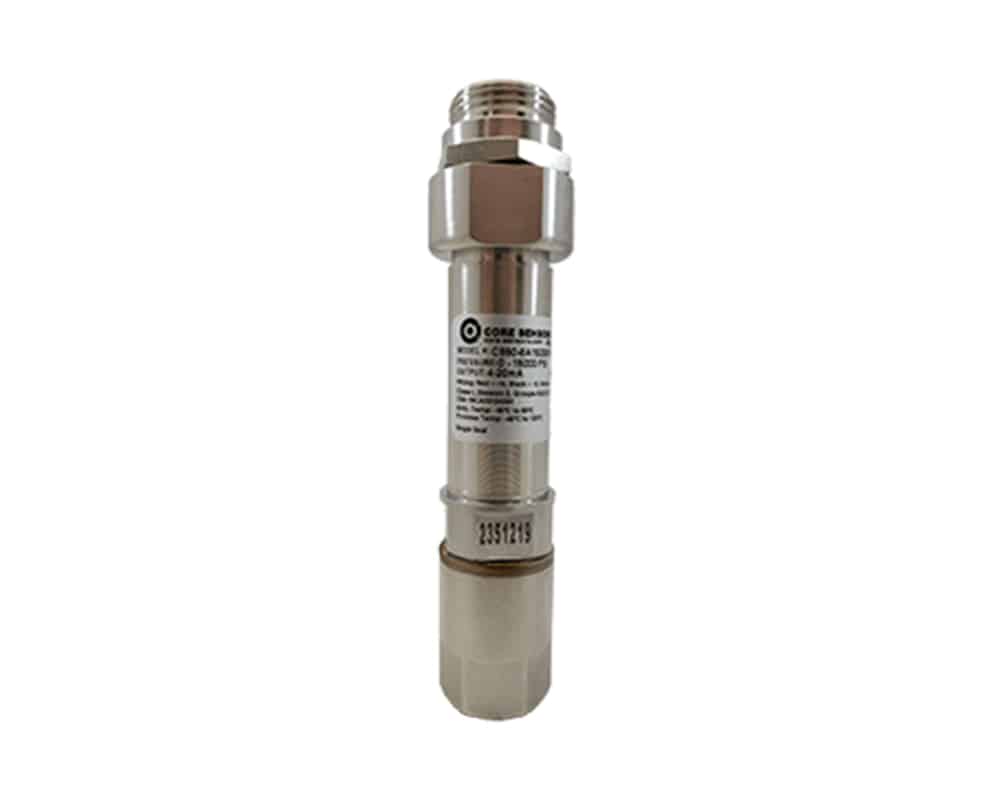
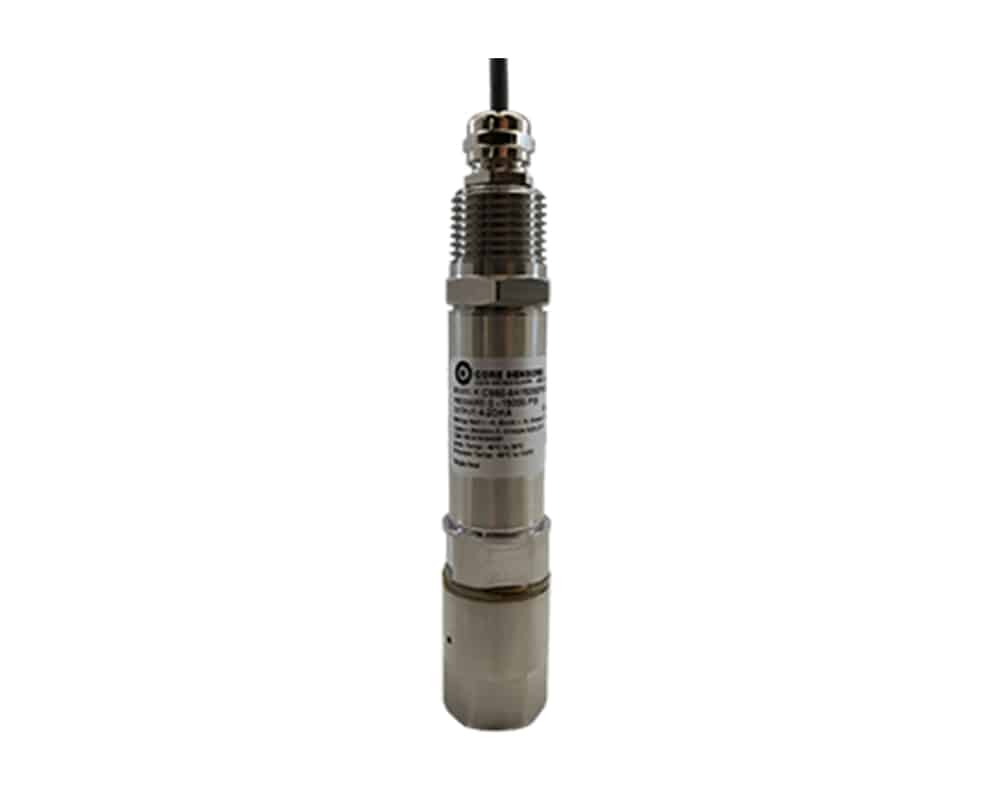
Benefits
- High Strength
- 316L Stainless Steel
UNS S31603 - All welded metal construction
No internal elastomer seals - Area Classification
CSA Class I, Division 2 Non-Incendive Groups A, B, C, D T4 - Marine ABS Approvals
- CE
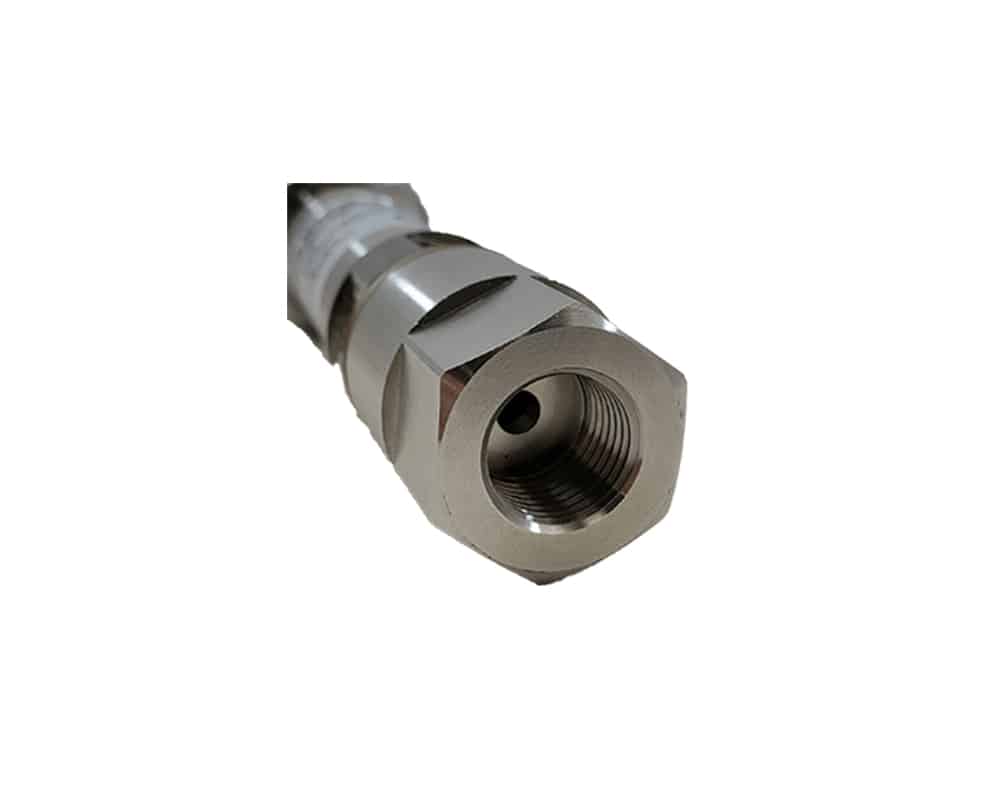
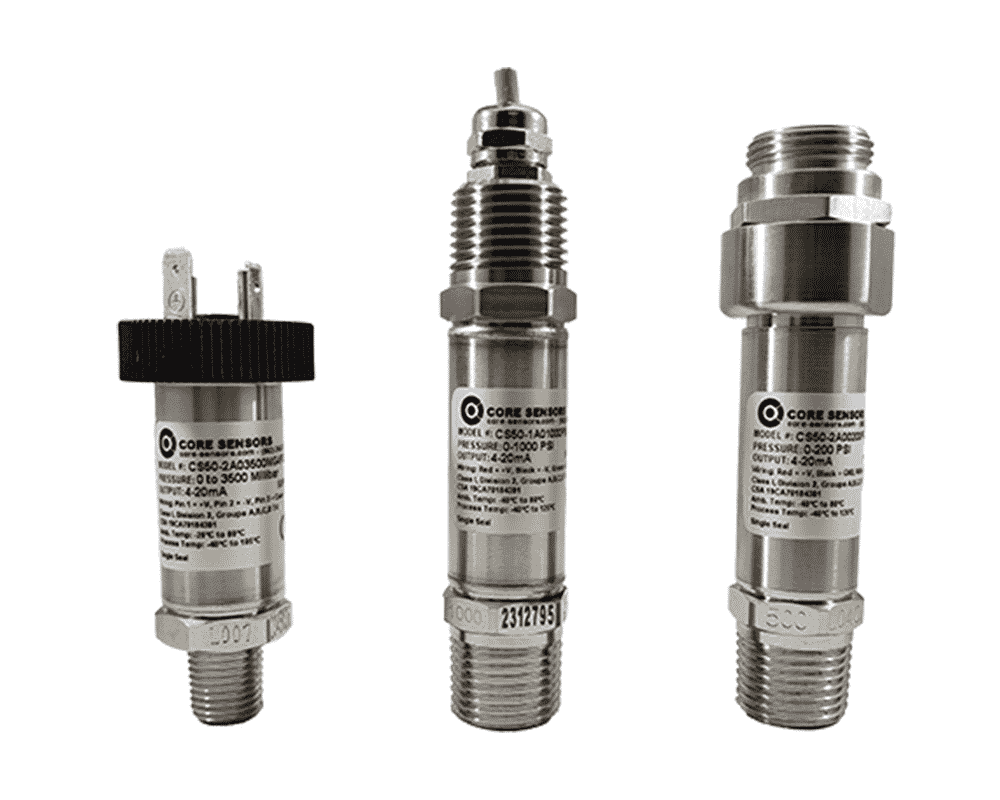
Industrial applications
For industrial applications where hazardous certification approvals are not required, the CS10 Industrial Pressure Transducer can be packaged to meet the demands of hydrogen environments. Pressure ranges are available from 50 PSI up to 20,000 PSI in solid 316L SS. Customers have the choice of various output signals including 4-20mA loop powered for long-distance transmissions and voltage outputs for low power and low current consumption applications. A variety of electrical connections are available from standard DIN connections to M12x1 and integral cable for a higher IP67 rating. Custom configurations are available for OEM projects.
Hazardous – Non-incendive
Some applications require non-incendive approved equipment, the CS50 Non-Incendive Pressure Transducer is an ideal solution to this and can be configured with 316L stainless steel material and various other options. The CS50 is approved for the following standards:
- CSA Class I, Division 2, Groups A, B, C, D T4
- ANSI/UL 122701 Single Seal
- ABS (American Bureau of Shipping)
- CE
Common model number configurations
To best suit your application and installation requirements, Core Sensors are able to customise the configuration of the below parts that are typically used in hydrogen fuel cell applications.
| Model Number | Description | Typical Use |
|---|---|---|
| CS10-GA00020BG2C000-00 View CS10 specifications | 0-20 Bar, 3/8-24 UNF-2A Male process connection, 0.5-4.5V ratiometric output signal (5VDC regulated power supply), Packard Metripack 150, 316L SS wetted material, Gauge | Post regulator pressure into PEM (Proton Exchange Membrane) |
| CS10-4A00020BG2C000-00 View CS10 specifications | 0-20 Bar, 7/16-20 UNF Male process connection, 0.5-4.5V ratiometric output signal (5VDC regulated power supply), Packard Metripack 150, 316L SS wetted material, Gauge | Post regulator pressure into PEM (Proton Exchange Membrane) |
| CS10-GA00448BS2C000-00 View CS10 specifications | 0-448 Bar, 3/8-24 UNF-2A Male process connection, 0.5-4.5V ratiometric output signal (5VDC regulated power supply), Packard Metripack 150, 316L SS wetted material, Sealed Gauge | High pressure Hydrogen storage |
| CS10-4A00448BS2C000-00 View CS10 specifications | 0-448 Bar, 7/16-20 UNF Male process connection, 0.5-4.5V ratiometric output signal (5VDC regulated power supply), Packard Metripack 150, 316L SS wetted material, Sealed Gauge | High pressure Hydrogen storage |
References
Hydrogen. (n.d.). Shell. https://www.shell.com/energy-and-innovation/new-energies/hydrogen.html
Hydrogen. (2022). Student Energy. https://studentenergy.org/source/hydrogen/
Hydrogen Pressure Sensors – Industrial & Hazardous. (n.d.). Core Sensors. https://core-sensors.com/hydrogen-pressure-sensors/